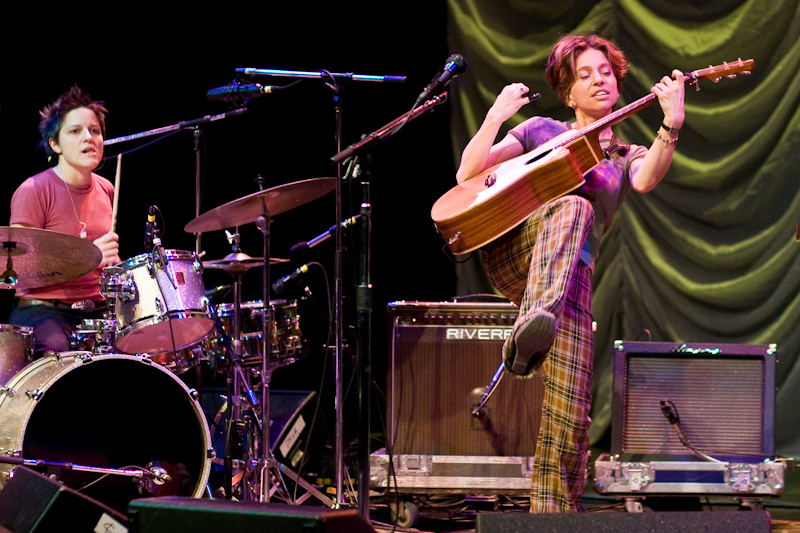|
Not So Soft
''Not So Soft'' is the second studio album by American singer-songwriter Ani DiFranco, released in 1991. Track listing Personnel * Ani DiFranco – vocals, Steel-string guitar, acoustic guitar, congas, sound effects, production, arrangement, artwork, design, cover design Technical * Dale Anderson – record producer * Tony Romano – editing, audio engineer, engineer * Don Wilkinson – editing * Suzi McGowan – artwork * Scot Fisher – photography * Karen Richardson – photography * Suzi McGowan – typesetting References {{Authority control Ani DiFranco albums 1991 albums Righteous Babe Records albums ... [...More Info...] [...Related Items...] OR: [Wikipedia] [Google] [Baidu] |
Ani DiFranco
Angela Maria "Ani" DiFranco (; born September 23, 1970) is an American-Canadian singer-songwriter. She has released more than 20 albums. DiFranco's music has been classified as folk rock and alternative rock, although it has additional influences from punk, funk, hip hop and jazz. She has released all her albums on her own record label, Righteous Babe. DiFranco supports many social and political movements by performing benefit concerts, appearing on benefit albums and speaking at rallies. Through the Righteous Babe Foundation, DiFranco has backed grassroots cultural and political organizations supporting causes including abortion rights and LGBT visibility. She counts American folk singer and songwriter Pete Seeger among her mentors. DiFranco released a memoir, ''No Walls and the Recurring Dream'', on May 7, 2019, via Viking Books and made The New York Times Best Seller list. Early life and education DiFranco was born in Buffalo, New York, on September 23, 1970, the daughte ... [...More Info...] [...Related Items...] OR: [Wikipedia] [Google] [Baidu] |
Indie Rock
Indie rock is a Music subgenre, subgenre of rock music that originated in the United States, United Kingdom and New Zealand from the 1970s to the 1980s. Originally used to describe independent record labels, the term became associated with the music they produced and was initially used interchangeably with alternative rock or "Pop rock, guitar pop rock". One of the primary scenes of the movement was Dunedin, where Dunedin sound, a cultural scene based around a convergence of noise pop and jangle became popular among the city's University of Otago, large student population. Independent labels such as Flying Nun Records, Flying Nun began to promote the scene across New Zealand, inspiring key college rock bands in the United States such as Pavement (band), Pavement, Pixies (band), Pixies and R.E.M. Other notable scenes grew in Madchester, Manchester and Hamburger Schule, Hamburg, with many others thriving thereafter. In the 1980s, the use of the term "independent music, indie" (or " ... [...More Info...] [...Related Items...] OR: [Wikipedia] [Google] [Baidu] |
Folk Rock
Folk rock is a hybrid music genre that combines the elements of folk and rock music, which arose in the United States, Canada, and the United Kingdom in the mid-1960s. In the U.S., folk rock emerged from the folk music revival. Performers such as Bob Dylan and the Byrds—several of whose members had earlier played in folk ensembles—attempted to blend the sounds of rock with their pre-existing folk repertoire, adopting the use of electric instrumentation and drums in a way previously discouraged in the U.S. folk community. The term "folk rock" was initially used in the U.S. music press in June 1965 to describe the Byrds' music. The commercial success of the Byrds' cover version of Dylan's "Mr. Tambourine Man" and their debut album of the same name, along with Dylan's own recordings with rock instrumentation—on the albums ''Bringing It All Back Home'' (1965), ''Highway 61 Revisited'' (1965), and '' Blonde on Blonde'' (1966)—encouraged other folk acts, such as Simon & Ga ... [...More Info...] [...Related Items...] OR: [Wikipedia] [Google] [Baidu] |
Righteous Babe Records
Righteous Babe Records is an American independent record label that was created by folk singer Ani DiFranco in 1990 to release her own songs in lieu of being beholden to a mainstream record company. History Righteous Babe Records was originally called Righteous Records; however, DiFranco then discovered a pre-existing gospel music label with that name, and to differentiate her company, added the "babe". Located in DiFranco's hometown of Buffalo, New York, the business grew organically, starting in 1990 with her first cassette tape. DiFranco sold the tapes out of the back of her car and at shows on tour, then sold them on consignment in local stores. Teaming up with her longtime business partner Scot Fisher, they were able to self-distribute her albums directly to over 100 indie accounts. Ani cites her anti-corporate ethos for the DIY ethics at Righteous Babe and not wanting to buy into the major label system. Having a large women’s music following she was able to make connectio ... [...More Info...] [...Related Items...] OR: [Wikipedia] [Google] [Baidu] |
Ani DiFranco (album)
''Ani DiFranco'' is the debut album of the singer-songwriter Ani DiFranco, released in 1990. Track listing All songs by Ani DiFranco. Side A # "Both Hands" – 3:38 # "Talk to Me Now" – 4:29 # "The Slant" – 1:36 # "Work Your Way Out" – 4:08 # "Dog Coffee" – 2:56 # "Lost Woman Song" – 4:50 # "Pale Purple" – 4:02 Side B # "Rush Hour" – 5:03 # "Fire Door" – 2:42 # "The Story" – 3:30 # "Every Angle" – 2:44 # "Out of Habit" – 2:45 # "Letting the Telephone Ring" – 4:30 Personnel * Ani DiFranco – acoustic guitar, vocals Production *Ani DiFranco – record producer *Dale Anderson – producer * John Caruso – engineer Engineers, as practitioners of engineering, are professionals who invent, design, analyze, build and test machines, complex systems, structures, gadgets and materials to fulfill functional objectives and requirements while considering the limit ... * Ed Stone – mastering * Scot Fisher – photography *Dave Meinzer – artwork ... [...More Info...] [...Related Items...] OR: [Wikipedia] [Google] [Baidu] |
Imperfectly
''Imperfectly'' is the third studio album by singer-songwriter Ani DiFranco, released in 1992 (see 1992 in music). Track listing Personnel *Ani DiFranco – guitar, vocals, production *Andy Stochansky – drums, percussion *Geoff Perry – bass *George Puleo – electric guitar *Greg Horn – trumpet *Tim Allan — mandolin *Mary Ramsey — viola The viola ( , also , ) is a string instrument that is bow (music), bowed, plucked, or played with varying techniques. Slightly larger than a violin, it has a lower and deeper sound. Since the 18th century, it has been the middle or alto voice of ... Production *Ani DiFranco – record producer *Ed Stone – producer, mastering, engineer *Tony Romano – engineer *Scot Fisher – photography References {{Authority control Ani DiFranco albums 1992 albums Righteous Babe Records albums ... [...More Info...] [...Related Items...] OR: [Wikipedia] [Google] [Baidu] |
AllMusic
AllMusic (previously known as All Music Guide and AMG) is an American online music database. It catalogs more than three million album entries and 30 million tracks, as well as information on musicians and bands. Initiated in 1991, the database was first made available on the Internet in 1994. AllMusic is owned by RhythmOne. History AllMusic was launched as ''All Music Guide'' by Michael Erlewine, a "compulsive archivist, noted astrologer, Buddhist scholar and musician". He became interested in using computers for his astrological work in the mid-1970s and founded a software company, Matrix, in 1977. In the early 1990s, as CDs replaced LPs as the dominant format for recorded music, Erlewine purchased what he thought was a CD of early recordings by Little Richard. After buying it he discovered it was a "flaccid latter-day rehash". Frustrated with the labeling, he researched using metadata to create a music guide. In 1990, in Big Rapids, Michigan, he founded ''All Music Guide' ... [...More Info...] [...Related Items...] OR: [Wikipedia] [Google] [Baidu] |
The Rolling Stone Album Guide
''The Rolling Stone Album Guide'', previously known as ''The Rolling Stone Record Guide'', is a book that contains professional music reviews written and edited by staff members from ''Rolling Stone'' magazine. Its first edition was published in 1979 and its last in 2004. The guide can be seen at Rate Your Music, while a list of albums given a five star rating by the guide can be seen at Rocklist.net. First edition (1979) ''The Rolling Stone Record Guide'' was the first edition of what would later become ''The Rolling Stone Album Guide''. It was edited by Dave Marsh (who wrote a large majority of the reviews) and John Swenson, and included contributions from 34 other music critics. It is divided into sections by musical genre and then lists artists alphabetically within their respective genres. Albums are also listed alphabetically by artist although some of the artists have their careers divided into chronological periods. Dave Marsh, in his Introduction, cites as precedents Le ... [...More Info...] [...Related Items...] OR: [Wikipedia] [Google] [Baidu] |
Slant Magazine
''Slant Magazine'' is an American online publication that features reviews of movies, music, TV, DVDs, theater, and video games, as well as interviews with actors, directors, and musicians. The site covers various film festivals like the New York Film Festival. History ''Slant Magazine'' was launched in 2001. On January 21, 2010, it was relaunched and absorbed the entertainment blog ''The House Next Door'', founded by Matt Zoller Seitz, a former ''New York Times'' and ''New York Press'' writer, and maintained by Keith Uhlich, former ''Time Out New York'' film critic, who was the blog's editor until 2012. In the media ''Slant''s reviews, which A. O. Scott of ''The New York Times'' has described as "passionate and often prickly", have occasionally been the source of debate and discourse online and in the media. Ed Gonzalez's review of Kevin Gage's 2005 film ''Chaos'' sparked some controversy when Roger Ebert quoted it in his review of the film for the ''Chicago Sun-Times''; '' ... [...More Info...] [...Related Items...] OR: [Wikipedia] [Google] [Baidu] |
Conga
The conga, also known as tumbadora, is a tall, narrow, single-headed drum from Cuba. Congas are staved like barrels and classified into three types: quinto (lead drum, highest), tres dos or tres golpes (middle), and tumba or salidor (lowest). Congas were originally used in Afro-Cuban music genres such as conga (hence their name) and rumba, where each drummer would play a single drum. Following numerous innovations in conga drumming and construction during the mid-20th century, as well as its internationalization, it became increasingly common for drummers to play two or three drums. Congas have become a popular instrument in many forms of Latin music such as son (when played by conjuntos), descarga, Afro-Cuban jazz, salsa, songo, merengue and Latin rock. Although the exact origins of the conga drum are unknown, researchers agree that it was developed by Cuban people of African descent during the late 19th century or early 20th century. Its direct ancestors are thought to be ... [...More Info...] [...Related Items...] OR: [Wikipedia] [Google] [Baidu] |
Design
A design is a plan or specification for the construction of an object or system or for the implementation of an activity or process or the result of that plan or specification in the form of a prototype, product, or process. The verb ''to design'' expresses the process of developing a design. In some cases, the direct construction of an object without an explicit prior plan (such as in craftwork, some engineering, coding, and graphic design) may also be considered to be a design activity. The design usually has to satisfy certain goals and constraints; may take into account aesthetic, functional, economic, or socio-political considerations; and is expected to interact with a certain Environment (systems), environment. Typical examples of designs include architectural drawing, architectural and engineering drawing, engineering drawings, circuit diagrams, Pattern (sewing), sewing patterns and less tangible artefacts such as business process models. Designing People who produce designs ... [...More Info...] [...Related Items...] OR: [Wikipedia] [Google] [Baidu] |




